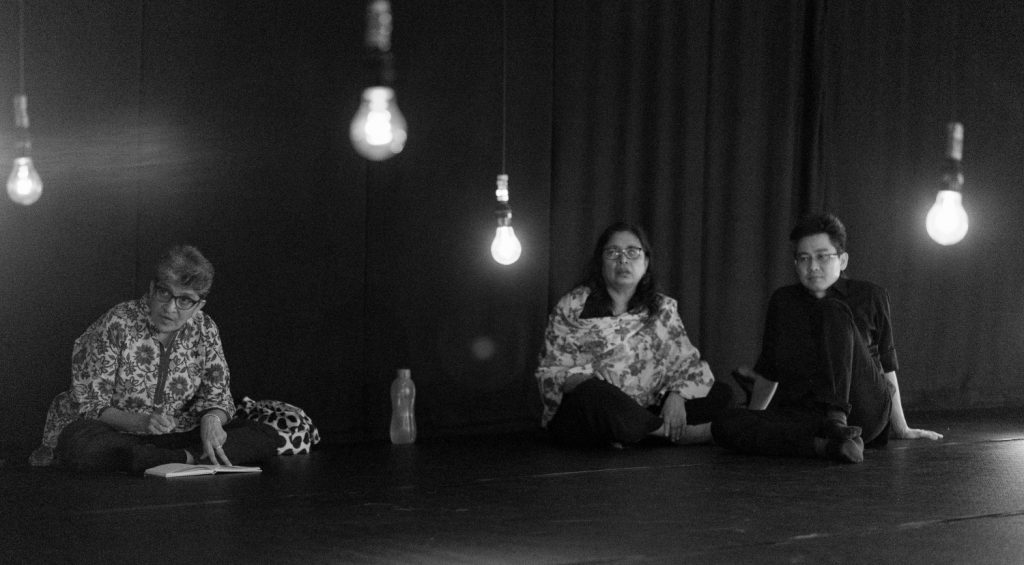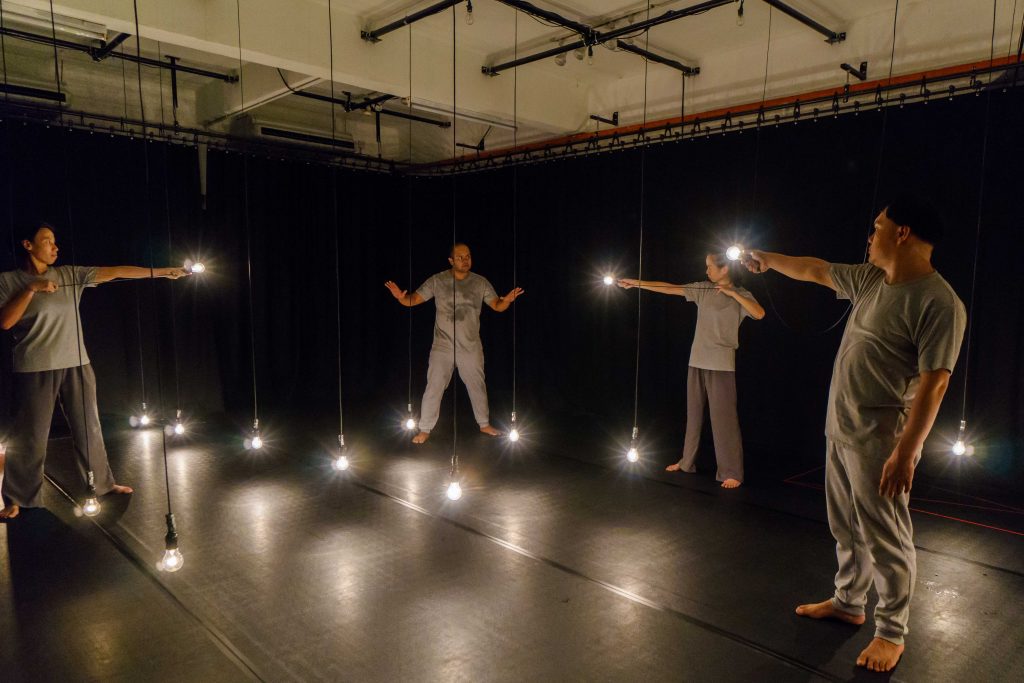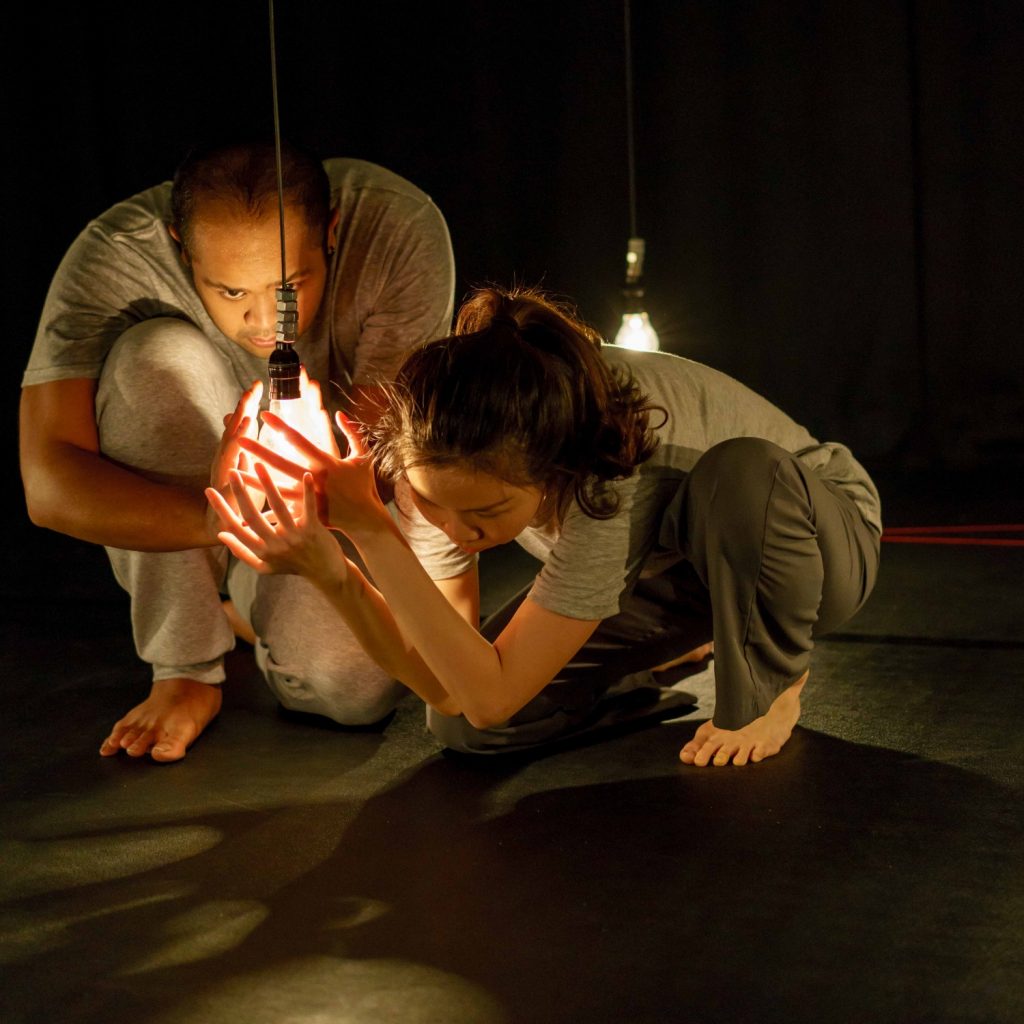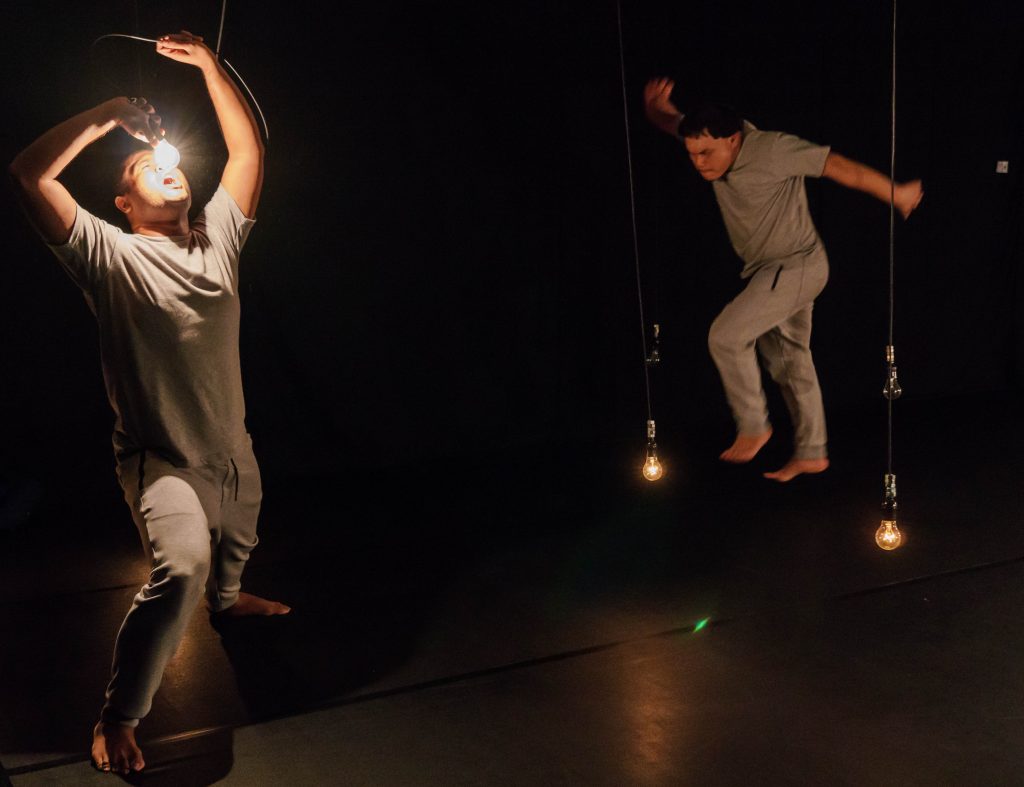- Views3702
- Likes0
Terbalik… mesti kena mata…
Produced by Five Arts Centre
Kotak, Five Arts Centre
10-13 August 2017
Review by Carmen Nge
In this era of environmental consciousness, the humble light bulb with its inefficient harnessing of electricity has taken a backseat to LEDs, the icon of eco-savings. But the light bulb has something going for it that no LED can hope to match: a presence of something elemental that is seared in our visual memory, something so bright it blinds us and something so charged with energy, it powers our existence. When the tungsten filament in a light bulb heats up, it radiates an incandescence that mimics the sun. The classic shape of a light bulb resembles that of a human head and the filament is like a firing neuron, pulsing with the potential for endless illumination. And like a life, some lights shine brighter, longer and more intensely than others.
If a lone light bulb can irradiate a dark room, imagine 36 bulbs, each suspended from the rafters of the black box called Kotak, the performance space at Five Arts Centre. Arranged in four undulating rows of light, these bulbs are transparent receptacles of tensile fragility, at times stoically unmoving and other times swaying precariously when touched. This light installation was part of Five Arts Centre recent experimental light+performance piece, aptly titled Terbalik.
Radically upsetting the usual hierarchy of performance making, whereby the lights are always subservient to the performers/performance, Terbalik was designed such that the lights would be installed first by lighting designer Mac Chan and independent of the rest of the show. Mac Chan’s lights were pre-programmed with 30 cues over a period of about 45 minutes and loosely structured into three acts. Once the lights were installed, directors Marion D’Cruz and Ivy Josiah would then enter the space with their four performers to devise a piece that adapted and responded to the lights. The two directors made it a point not to ask the lighting designer to change the lighting cues or to tweak the lights to match the needs of the performers or the aesthetic demands of the performance. D’Cruz and Josiah wanted very much to respect the raison d’être of Terbalik, namely to let the lights dictate the performance and not the other way around.

The show that emerged from this experiment is a powerful testament to the importance of upsetting the status quo. New forms and feelings are allowed to surface, and unexpected tributaries of performance open up terrains of artistic collaboration that were before uncharted.
I was fortunate to be able to see Terbalik twice and from different vantage points: the first time seated on a chair at one end of the rectangular Kotak, with an overview of the entire performance space; and the second time seated on the floor at eye level with the lights, so immersed in the space that I was unable to see the other end of the room. Each time I experienced the show very differently because the lights, and the stories narrated by the shadowy forms of the performers were strangely hypnotic and palpably familiar in rather divergent ways. At eye level, the lights evoked a festive mood and were imbued with a religious tenor; they became Hari Raya and Deepavali lights or candles at a temple or church altar. When seated with a bird’s-eye view, I felt almost god-like as I marvelled at how radiantly the lights interspersed the darkness.
By employing our primordial fascination with the interplay of light and dark, Mac Chan masterfully orchestrates the intensity of our emotions through the adjustments of brightness levels, and adroitly manipulates time through the length of his lighting cues. A naked light bulb diffuses light rather than sculpts it; thus, the quality of light in Chan’s design is durational rather than sculptural. His lights effect the sensation of time passing and the gradual unfolding of a moment. It does not cut through the dark like a swift sword but it emits slowly, saturating the space with a cosy familiar presence. It is like feeling the warmth of the sun after a thunderstorm, its rays gingerly breaking through thick nimbus.
The slow infusion of light into the darkened space is perfectly matched by the pin drop silence of the first scene of the performance. All four performers inch so slowly along their respective paths that their movements are imperceptible from afar; up close however, the stillness of their bodies carve statuesque black shapes that partially block out the light. When their voices rupture the stillness with well-known names of the deceased — Aminulrasyid, Canny Ong, T Nhaveen, Kevin Morais, Altantuyaa— the flicker and fade of the light bulbs take on new significance.
If Chan’s lights convey the immanence of life amidst the gloom then D’Cruz and Josiah’s direction promulgates the disclosure of personal and private stories told to a room full of witnesses hiding in the semi-darkness. The four performers narrate tales of loss and disappearance, oscillating between spoken prose and plaintive song, the breaks and crackles in their voices analogous to the dimming and the flickering of the lights.
Each performer occupies the space with their own unique abilities: Wong Tay Sy’s steady, assured gestures and raw musicality; chi too’s ponderous worm-like manoeuvres and preternatural shrieking; Janet Moo’s graceful, balletic movements and Syamsul Azhar’s powerful, pounding energy. But when the performers moved in concert with the lights in the final scene, the weightlessness of the swaying, floating lights contrasted beautifully with the rootedness of their human bodies. The combined presence of lights and bodies elevated the performative to the poetic.
If light is a poem then lumens are its vocabulary and the parameters of cues and sequences programmed by Mac Chan are the structure by which light carves out its spaces of meaning. Duration and darkness are the punctuation in this incandescent free verse, where each performer is a filament of human existence making his or her way in the dark, occasionally lightening the way for one another.
Carmen Nge is a writer and arts enthusiast; she is currently an assistant professor at the Faculty of Creative Industries, Universiti Tunku Abdul Rahman (UTAR).
All photos in this review courtesy of Five Arts Centre.


